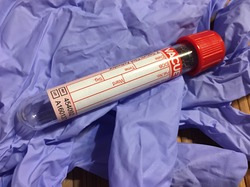 PCBs – the common term for polychlorinated biphenyls – are toxic manufacturing compounds that do not occur in nature and have been linked to various health problems with the liver, thyroid, skin, and eyes. Moreover, they have been classified as probable human carcinogens by the EPA and the International Agency for Research on Cancer (IARC), based on animals studies that provided conclusive evidence that PCBs cause cancer. And they are commonly found in light ballasts and building materials in schools.
PCBs – the common term for polychlorinated biphenyls – are toxic manufacturing compounds that do not occur in nature and have been linked to various health problems with the liver, thyroid, skin, and eyes. Moreover, they have been classified as probable human carcinogens by the EPA and the International Agency for Research on Cancer (IARC), based on animals studies that provided conclusive evidence that PCBs cause cancer. And they are commonly found in light ballasts and building materials in schools.
PCBs were manufactured by Monsanto for use in a multitude of products, from floor finishers and oil paints, to caulk, carbonless copy paper, and the ballast contained in fluorescent lights. They are nonflammable, chemically stable, and excellent electrical insulators, making them convenient and versatile in the manufacturing process. However, the price for these manufacturing conveniences – the disastrous consequences they can have on health – is far too steep to pay, and in 1979, they were effectively banned by the U.S. government. But this should have been only the first step – and the next steps have been slow in coming.
The health threats posed by products containing PCBs didn’t disappear with the manufacturing ban. PCBs have very slow decomposition rates and retain their toxicity even in very low concentrations. Animals that ingest them can then pass them up the food chain and contaminate an entire ecosystem. And this isn’t even touching on schools – where testing consistently turns up high concentrations of PCBs.
 Illinois Personal Injury Lawyer Blog
Illinois Personal Injury Lawyer Blog



